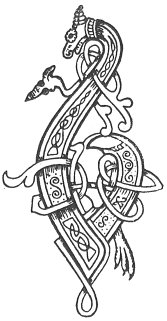|
 |
BU cho fus a dh’ Iosa
An crann crion uradh
’S an crann ur a chrionadh,
Nam b’e run a dheanadh.
Eosai! Eosai! Eosai!
Eosai! bu choir a mholadh.
Ni bheil lus an lar
Nach bheil lan d’a thoradh,
Ni bheil cruth an traigh
Nach bheil lan d’a shonas.
Eosai! Eosai! Eosai!
Eosai! bu choir a mholadh.
Ni bheil creubh am fairge,
Ni bheil dearg an abhuinn, |
|
IT were as easy for Jesu
To renew the withered tree
As to wither the new
Were it His will so to do.
Jesu! Jesu! Jesu!
Jesu! meet it were to praise Him.
There is no plant in the ground
But is full of His virtue,
There is no form in the strand
But is full of His blessing.
Jesu! Jesu! Jesu!
Jesu! meet it were to praise Him.
There is no life in the sea,
There is no creature in the river, |
|
|
Ni bheil cail an fhailbhe,
Nach bheil dearbh d’a mhaitheas.
Eosai! Eosai! Eosai!
Eosai bu choir a mholadh.
Ni bheil ian air sgeith
Ni bheil reul an adhar,
Ni bheil sian fo’n ghrein.
Nach tog sgeul d’a mhaitheas.
Eosai! Eosai! Eosai!
Eosai bu choir a mholadh. |
|
There is naught in the firmament,
But proclaims His goodness.
Jesu! Jesu! Jesu!
Jesu! meet it were to praise Him.
There is no bird on the wing,
There is no star in the sky,
There is nothing beneath the sun,
But proclaims His goodness.
Jesu! Jesu! Jesu!
Jesu! meet it were to praise Him. |
